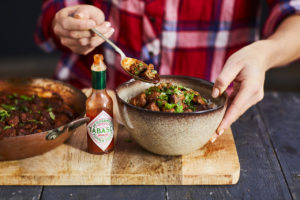While most people get stuck on its price tag, few cooks know the rich history, and many struggle to articulate the taste of the tiny, flaming-red thread that is saffron. Editor-in-Chief Liezl Vermeulen shares her amazement (and some confusion) after joining a saffron harvest.
Saffron is steeped in history (and in water before cooking, but more on that in a bit). The Ancient Greeks were known to use saffron in cosmetics, while the Romans drank a saffron broth as a, let’s say, love potion. Phoenicians used saffron as fabric dye, creating prized deep-gold-coloured veils for brides.
Produced in Middle Eastern countries, such as Iran, Turkey and Afghanistan, their recipe books are laced with this treasured spice. In fact, Arabs brought saffron to Spain over 1000 years ago. It is here in the centre of Spain, in the region of La Mancha, where I joined an October harvest.
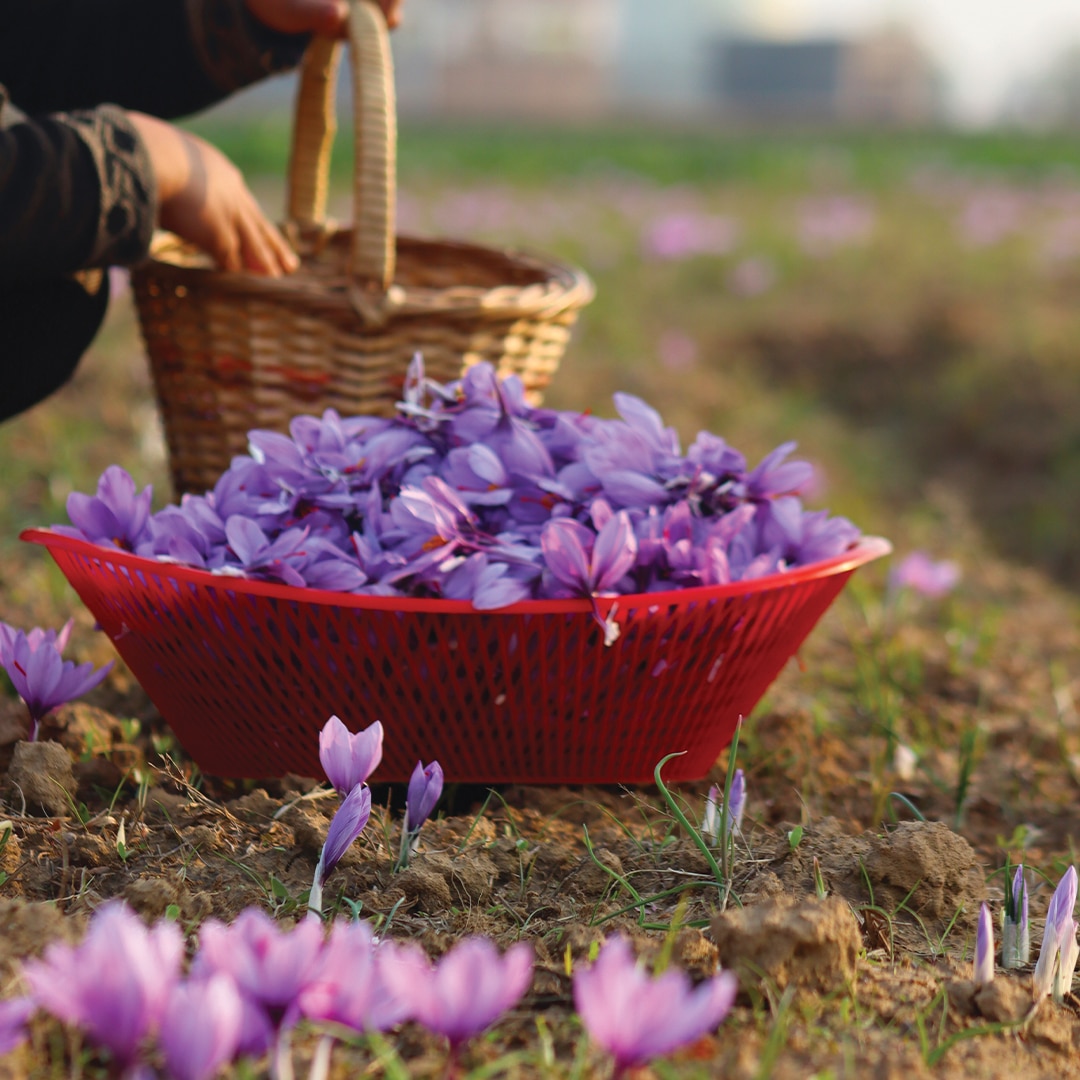
Fairytale flowers
La Mancha reminded me of the dry, flat Northern Cape landscape with its scorching sun. It was not the Western Cape lookalike, where we have beds of wildflowers in September. I’ve read descriptions about the saffron flower fields, – calling it ‘purple carpets’, but my expectation of rolling hills in lavender hues was not quite met.
My mind’s eye saw something more fanciful – I was here to meet the gold medallist of spice, after all. From the dusty soil we walked on to the sweatpants-wearing farmers, nothing indicated that there was something special here. The farmers balanced old, once-white plastic buckets under their arms. (A single, quaint, woven basket was left to the side of the field for the tourist’s photo op, I presume.) The world’s most expensive spice was here, right in front of me, but no one would ever know.
Tiny, precious saffron crocus flowers stood scattered on the grey sand, growing just a few centimetres above the ground. A close-up look at these flowers delivered the vibrant beauty that I was expecting – no disappointment there.
How to harvest gold
The price of saffron can be ascribed to the ‘hurry-up but be careful’ nature of the harvest. With a window of about 10 days in October, a flurry of picking and moving erupts. The flowers open in the dark and must be harvested on the same day to preserve flavour. Add the harsh sun in the mix, and farmers are forced to pick flowers early in the morning. They’ll need to pick about 200 flowers to end up with a single gram of dried saffron.
I was wrong again when I thought picking these tiny flowers would be a delicate job. With speed and what seemed like little effort, the men raced through them. In the shade of a car, buckets of the flowers drove off to their next stop.
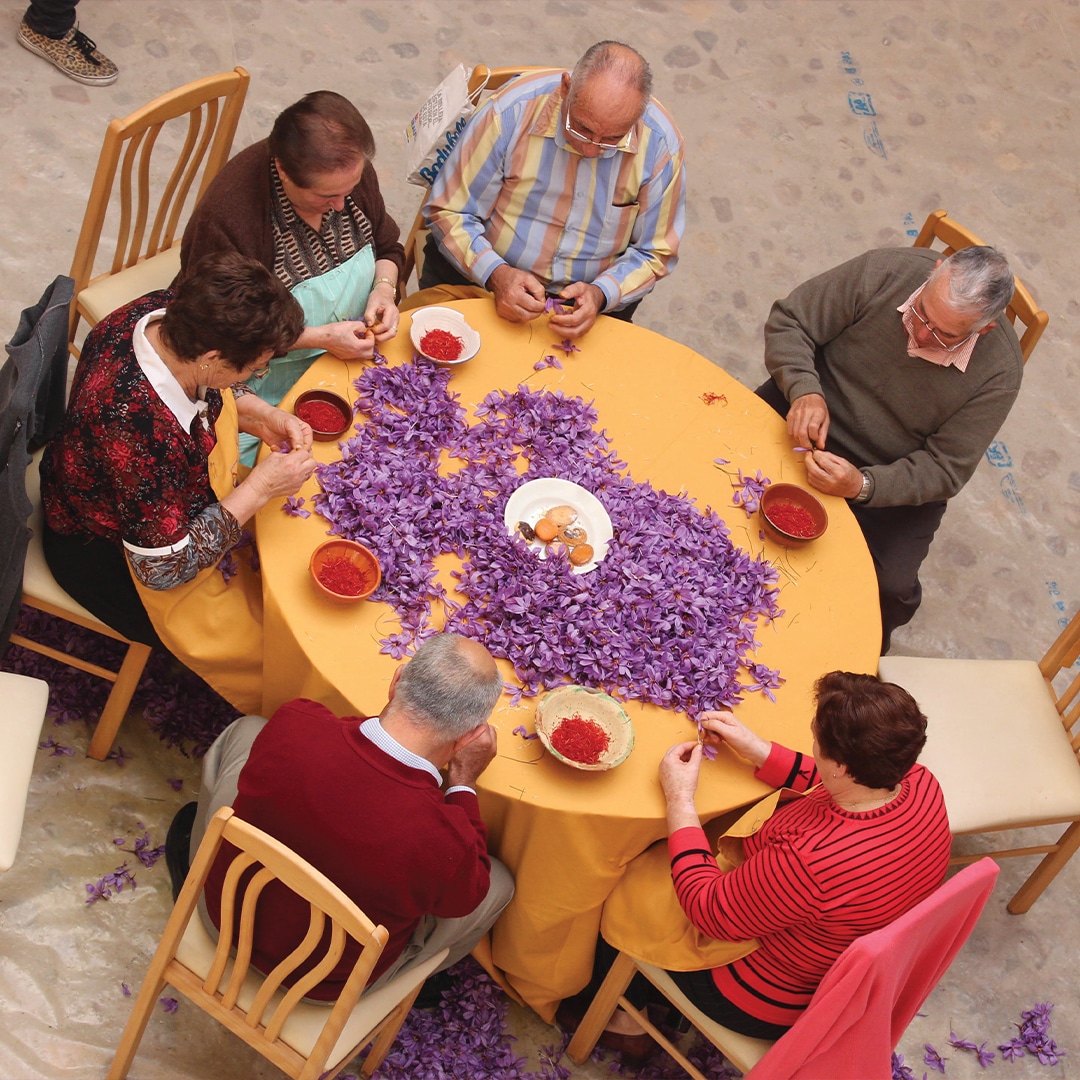
Red thread and cookies
In town, yellow tablecloths lined round tables. Chipped ceramic bowls held the precious stigma (the three red threads per flower) and the flower-picking saffron grannies, as I affectionately thought of them, wore what could’ve been hand-me-down clothes. A plate of cookies stood askew on top of the pile of unpicked flowers. Again, I was caught off-guard with how nonchalant the occasion seemed to be, how down-to-earth the home of this expensive spice was.
Their hands moved quickly and on their own, while their owners chatted away. Yellow-stained fingertips tossed the flowers to the floor once the red thread was retrieved. It was only when I started asking questions about quality and flavour that things got serious.
Saffron’s uniqueness and boldness of flavour could not be overstated. The passion for the quality of it was oozing out as they explained how they will not harvest from that patch of soil again for four years to ensure the soil can deliver the same quality.
With the flowers now forgotten on the floor, the saffron threads were placed on a sieve drum for drying. Originally done over charcoal, today gas burners gently dry the spice to perfection.
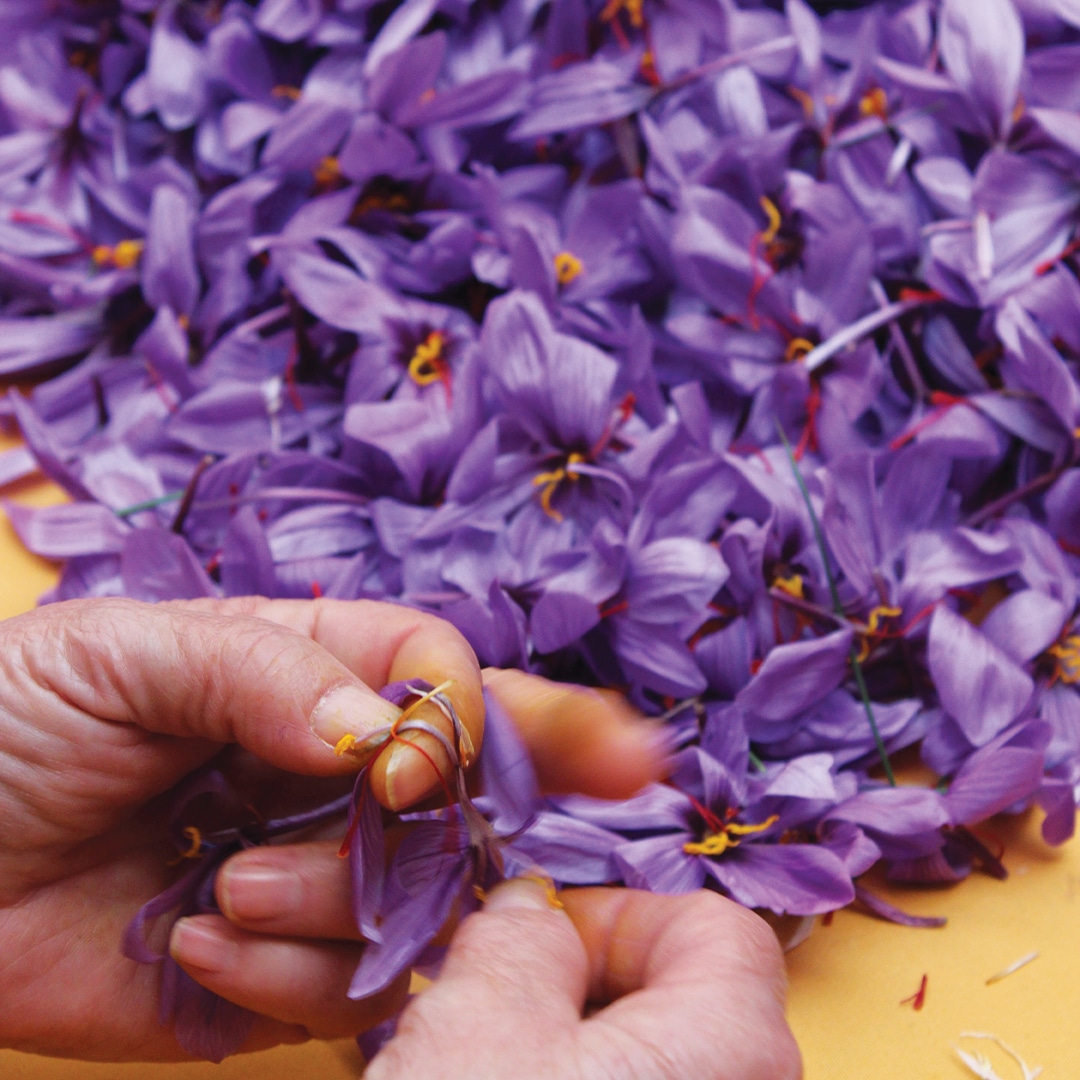
Saffron savvy
Now with a cookie in hand, I was clearly identified by the saffron grannies as the tourist (aka the saffron rookie), so they began teaching me how to handle the precious threads.
- Store away from light, sealed in a cool, dark place for up to 2 years.
- 3-4 stands of saffron will be enough to flavour a meal for 4 people. Don’t add more than 6 strands, they warned – clearly not knowing my budget constraints – as the taste becomes bitter when used in excess.
- Rub saffron between fingers to crush slightly before using, ensuring all the flavour will be released.
- Use saffron only in hot dishes but know that it can’t just be added at the end to a hot dish.
- Before adding the saffron to food, steep the strands in a little bit of hot water. The saffron tea or infusion is then added to the hot dish to permeate through the ingredients as it cooks.
Taste tests
In the West, we often associate saffron’s golden hue with European dishes such as Spanish paella and Italian risotto Milanese. However, in the Middle East, dishes such as Tandig, lamb tagine and Azarbaijani shortbread (Pakhlava) are commonly associated with the spice.
The common ground on saffron, no matter the country, is that the taste is slightly undefinable and unlike anything else. It is the carotenoids and ethereal oils that gives this spice its mysterious aroma and unique taste.
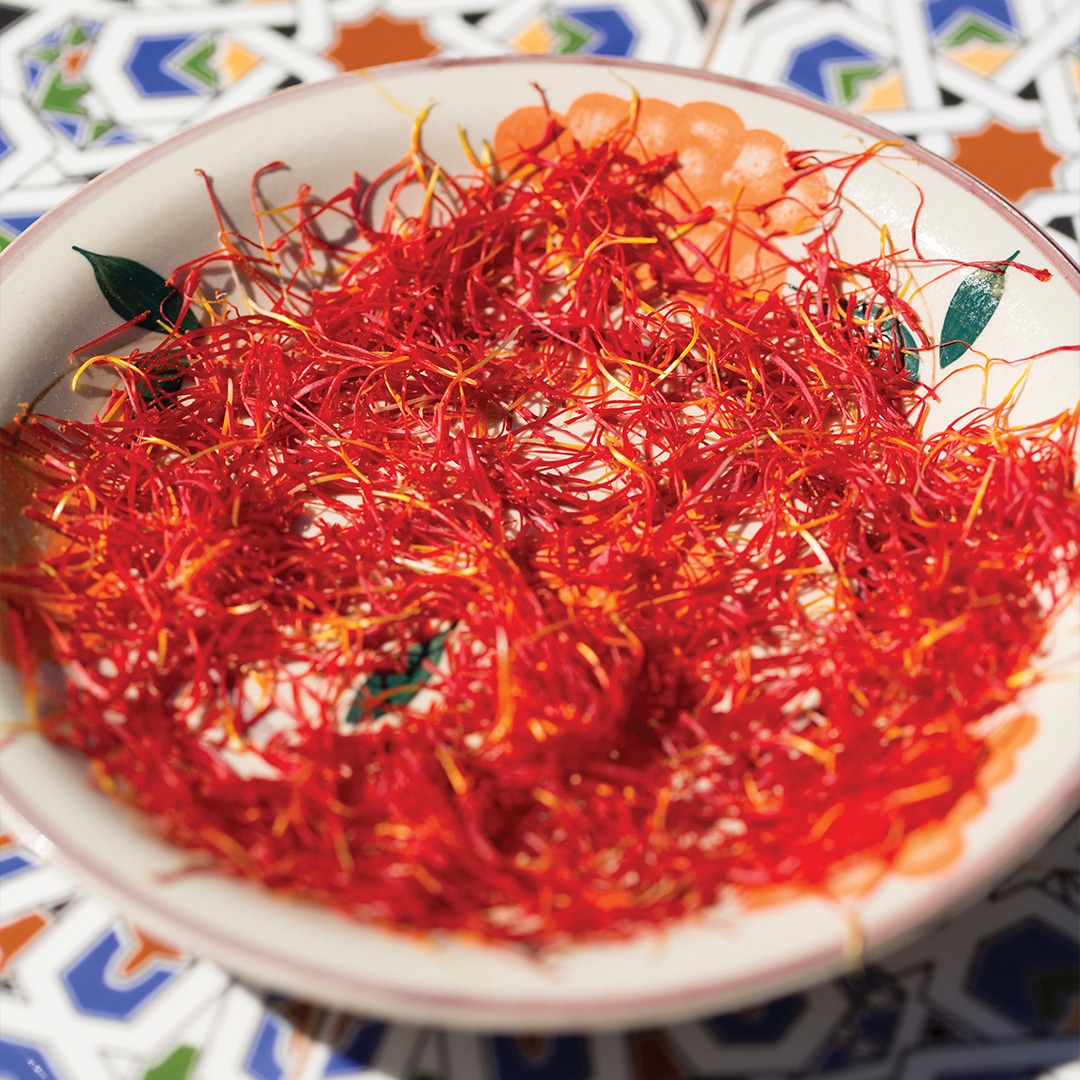
Skip the saffron bargain
Iranian-, Afghan-, Spanish and Greek saffron is top quality. (As you might imagine, each country differs on who produces the best in the world.) Luckily for consumers, there are gradings on saffron. Each country has its own grading system that takes the colour intensity, purity as well as the length of the stigma into consideration.
In short, if you find cheap saffron then it’s likely not the real deal or enhanced with dye. On the other hand, top dollar doesn’t guarantee top quality. Look out for the official country of origin ‘stamp’ and use a trusted small grocer, who will often be willing to put a thread in water (producing a yellow, not red, colour) or offer a money-back guarantee on quality.
Every foodie should try quality saffron once in their life. I’d suggest starting with saffron rice, a plain canvas that is turned golden with unique flavour that shines through strongly on your palate.
By: Liezl Vermeulen
Photography by: Getty Images, Liezl Vermeulen



